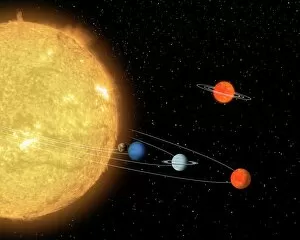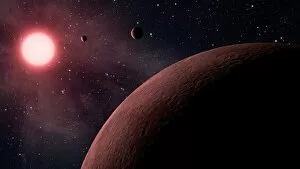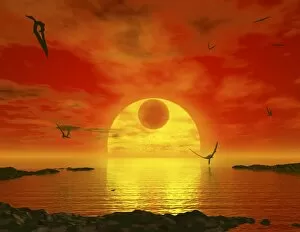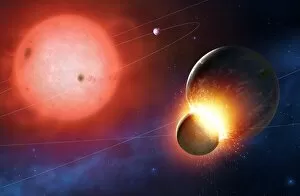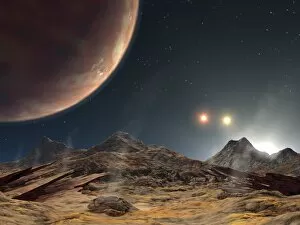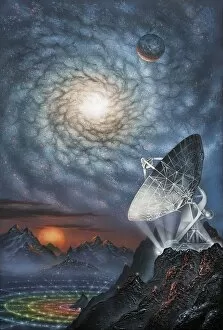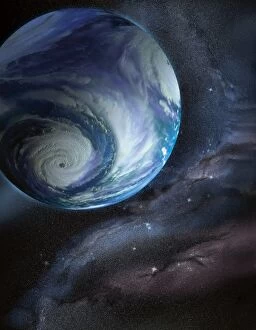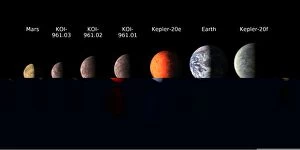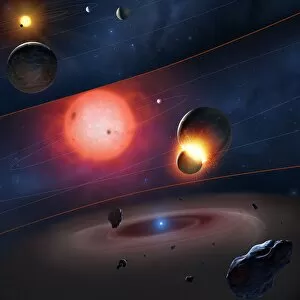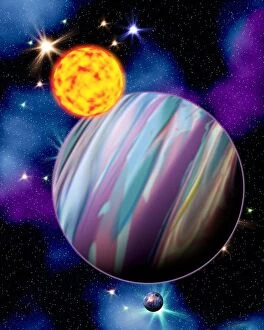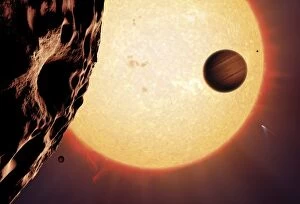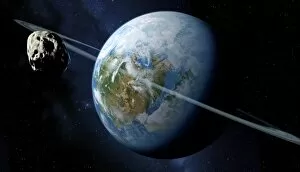Exoplanets Collection
"Exploring the Vastness of Exoplanets: Comparing Planetary Systems and Unveiling Hidden Worlds" This artist's concept depicts a system called KOI-961
All Professionally Made to Order for Quick Shipping
"Exploring the Vastness of Exoplanets: Comparing Planetary Systems and Unveiling Hidden Worlds" This artist's concept depicts a system called KOI-961, which hosts the three smallest exoplanets ever discovered. These tiny celestial bodies offer intriguing insights into planetary formation and diversity. Another captivating artwork portrays Gliese 581 c, an Earth-like exoplanet that has sparked immense curiosity among scientists. Its potential for hosting life outside our solar system continues to fascinate researchers worldwide. The Kepler space telescope, after nine years in deep space collecting astounding scientific data, has revolutionized our understanding of the cosmos. It revealed a staggering truth - there are more planets than we could have ever imagined, dotting our night sky with billions of hidden worlds waiting to be explored. As we gaze into the future, this captivating image showcases the Sun as a Red Giant. This transformation offers us a glimpse into what lies ahead for our own solar system millions of years from now. Intriguing artworks depict alien planetary systems and their mesmerizing landscapes. These imaginative illustrations transport us to distant corners of the universe where new discoveries await us at every turn. An alien radio telescope artwork reminds us that communication across vast cosmic distances is not beyond reach. The quest for extraterrestrial intelligence continues as we explore ways to connect with other civilizations in far-flung star systems. Step into another world through stunning artistic renditions depicting alien planets - each unique in its composition and potential habitability. These visuals ignite our imagination and fuel our desire to uncover more about these enigmatic realms beyond Earth's boundaries. Delving deeper into astronomical wonders, ALMA's image captures Fomalhaut dust ring - an exquisite display of cosmic beauty surrounding a distant star system. Such observations provide valuable insights into planet formation processes occurring throughout the universe. Lastly, diverse exoplanet types come alive through intricate artworks showcasing their distinct characteristics.

